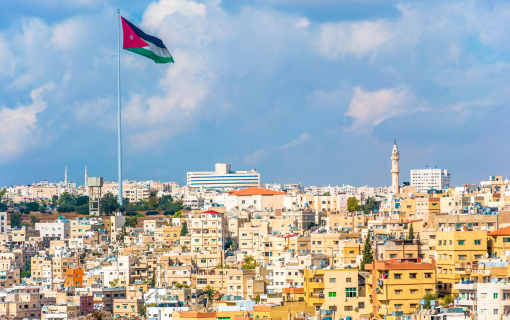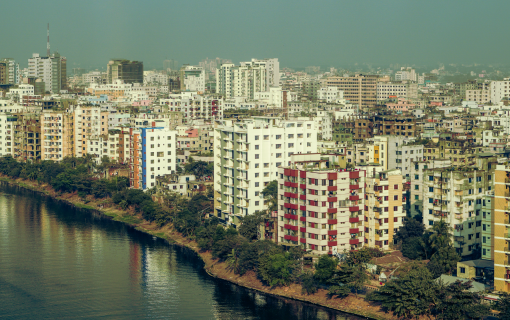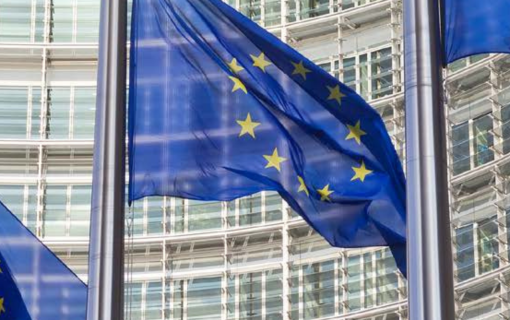News and Updates
Interview/Speech/Testimony
IFES Q&A with Former Chief Election Commissioner of India Dr. SY Quraishi
Published
As a former Chief Election Commissioner of India, Dr. SY Quraishi has a deep understanding of the intricacies of how the world’s largest democracy works. He also has more than 35 years of experience in civil service. Dr. Quraishi is well known in India and abroad as a development thinker, for his inclusive style of leadership, and for bringing together wide varieties of groups and institutions to achieve the common objectives of development. In this Q&A, Dr. Quraishi discusses challenges the Election Commission of India (ECI) faces in preparing to conduct credible elections and shares lessons learned. India’s five-week general elections started on April 7.
What security measures has the ECI put in place to ensure the integrity of the world's largest election?
A: The Election Commission has ensured a fool-proof three tiered security: local police, State Armed Police and Central Armed Police Forces (known as paramilitary).
That is is to ensure peaceful and trouble free polls. Then there are layers of security checks for the electronic voting machines (EVMs). They are thoroughly checked by engineers twice before deployment in the polling booth. On both occasions, representatives of political parties or candidates are present. Before the actual poll, there is a “mock poll” for an hour. Only after the agents of candidates certify the functioning of the EVM, the actual poll begins.
The third layer of security is the screening of the entire polling staff for neutrality.
The fourth level is conducted by very senior observers from outside the state. There is constant vigil. Video recording, a surveillance system (known as CCTV) and a free and independent media are just some of the other checks.
How does the ECI protect the secrecy of election results with a vote held in nine stages, over a five-week period? How are ballots protected/secured?
The polled EVMs are kept in heavily secured strong rooms, guarded round the clock by Central Armed Police Forces personnel and agents of tcandidates. CCTV and video cameras keep an eye too. There is zero possibility of secrecy of the votes getting violated. Until the EVMs are opened on the day of counting, the machines are out of bounds for everyone, including the polling officials.
What is the biggest challenge the ECI faces in this election?
There are several, some common across the country and some specific to local areas. In disturbed areas like the Maoist areas, the physical security is the biggest challenge.
In some areas it is the use of money power. In other instances, the distribution of liquor and drugs is used to entice the voters. The ECI has plans in place for all of these challenges.
What is the ECI doing to fight vote-buying and money-power?
Money is a continuing concern. Expenditure observers, Flying Squads, video watch teams, and model code of conduct observation teams are some of the measures that have made abuse of money a lot more difficult. But black money can’t be controlled in 30 days. So it is a cat and mouse game between the ECI and parties/candidates.
Along with regulation and control measures, the ECI also has an effective program of voter education, which urges the voters not to accept bribes and inducements and also to report them to the election officers. It had been quite successful but a lot more is yet to be achieved.
With 814 million eligible voters, how does the ECI educate citizens on the electoral process?
The ECI has set up an ambitious voter education program. It started with the establishment of a full-fledged Voter Education Division in 2009-10.
The program, called Systematic Voter Education for Electoral Participation (SVEEP), has been a thundering success. National Voters’ Day was introduced to improve registration of voters, especially the youth. In the 22 states that have gone to poll in the last three years, 14 have recorded the highest turnout in 63 years of history, and in 17 of those 22 states, women have come out in larger numbers to vote.
What can you say about women's participation in elections? What about the inclusion of persons with disabilities?
Our voter education program specially targeted women. The ECI has special provisions for them like separate queues, women polling staff and, in some cases, even separate polling stations. For persons with disabilities, we provide a ramp in every polling station, Braille facility on every EVM, and allow a companion to accompany the old and infirm inside the polling compartment.
What lessons can other countries learn from the world's largest democracy?
Several. Good elections begin with a good electoral roll. Elections can be won and lost before the election if the electoral rolls are doctored or imperfect. Neutrality of polling staff has to be ensured to the hilt. Adequate security has to be provided to check intimidation. Level playing field for all contestants must be ensured. If the ECI enjoys credibility and trust of all stakeholders , the task becomes much easier.
Please describe a memorable moment from your time as Chief Election Commissioner.
There are several. But introduction of National Voters’ Day has proved momentous in creating a participation revolution. On this day, every January 25th, about 800,000 functions are simultaneously organized to give voter identity cards to new voters. Almost 100 million voters were given these cards in four National Voters’ Days since 2011.
What security measures has the ECI put in place to ensure the integrity of the world's largest election?
A: The Election Commission has ensured a fool-proof three tiered security: local police, State Armed Police and Central Armed Police Forces (known as paramilitary).
That is is to ensure peaceful and trouble free polls. Then there are layers of security checks for the electronic voting machines (EVMs). They are thoroughly checked by engineers twice before deployment in the polling booth. On both occasions, representatives of political parties or candidates are present. Before the actual poll, there is a “mock poll” for an hour. Only after the agents of candidates certify the functioning of the EVM, the actual poll begins.
The third layer of security is the screening of the entire polling staff for neutrality.
The fourth level is conducted by very senior observers from outside the state. There is constant vigil. Video recording, a surveillance system (known as CCTV) and a free and independent media are just some of the other checks.
How does the ECI protect the secrecy of election results with a vote held in nine stages, over a five-week period? How are ballots protected/secured?
The polled EVMs are kept in heavily secured strong rooms, guarded round the clock by Central Armed Police Forces personnel and agents of tcandidates. CCTV and video cameras keep an eye too. There is zero possibility of secrecy of the votes getting violated. Until the EVMs are opened on the day of counting, the machines are out of bounds for everyone, including the polling officials.
What is the biggest challenge the ECI faces in this election?
There are several, some common across the country and some specific to local areas. In disturbed areas like the Maoist areas, the physical security is the biggest challenge.
In some areas it is the use of money power. In other instances, the distribution of liquor and drugs is used to entice the voters. The ECI has plans in place for all of these challenges.
What is the ECI doing to fight vote-buying and money-power?
Money is a continuing concern. Expenditure observers, Flying Squads, video watch teams, and model code of conduct observation teams are some of the measures that have made abuse of money a lot more difficult. But black money can’t be controlled in 30 days. So it is a cat and mouse game between the ECI and parties/candidates.
Along with regulation and control measures, the ECI also has an effective program of voter education, which urges the voters not to accept bribes and inducements and also to report them to the election officers. It had been quite successful but a lot more is yet to be achieved.
With 814 million eligible voters, how does the ECI educate citizens on the electoral process?
The ECI has set up an ambitious voter education program. It started with the establishment of a full-fledged Voter Education Division in 2009-10.
The program, called Systematic Voter Education for Electoral Participation (SVEEP), has been a thundering success. National Voters’ Day was introduced to improve registration of voters, especially the youth. In the 22 states that have gone to poll in the last three years, 14 have recorded the highest turnout in 63 years of history, and in 17 of those 22 states, women have come out in larger numbers to vote.
What can you say about women's participation in elections? What about the inclusion of persons with disabilities?
Our voter education program specially targeted women. The ECI has special provisions for them like separate queues, women polling staff and, in some cases, even separate polling stations. For persons with disabilities, we provide a ramp in every polling station, Braille facility on every EVM, and allow a companion to accompany the old and infirm inside the polling compartment.
What lessons can other countries learn from the world's largest democracy?
Several. Good elections begin with a good electoral roll. Elections can be won and lost before the election if the electoral rolls are doctored or imperfect. Neutrality of polling staff has to be ensured to the hilt. Adequate security has to be provided to check intimidation. Level playing field for all contestants must be ensured. If the ECI enjoys credibility and trust of all stakeholders , the task becomes much easier.
Please describe a memorable moment from your time as Chief Election Commissioner.
There are several. But introduction of National Voters’ Day has proved momentous in creating a participation revolution. On this day, every January 25th, about 800,000 functions are simultaneously organized to give voter identity cards to new voters. Almost 100 million voters were given these cards in four National Voters’ Days since 2011.









